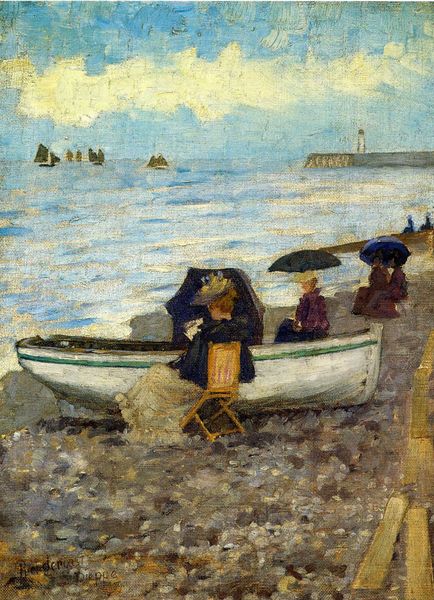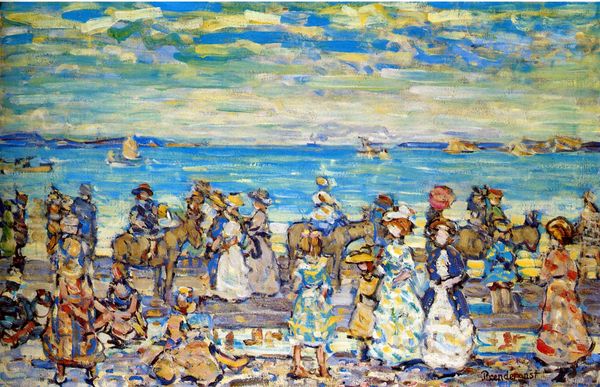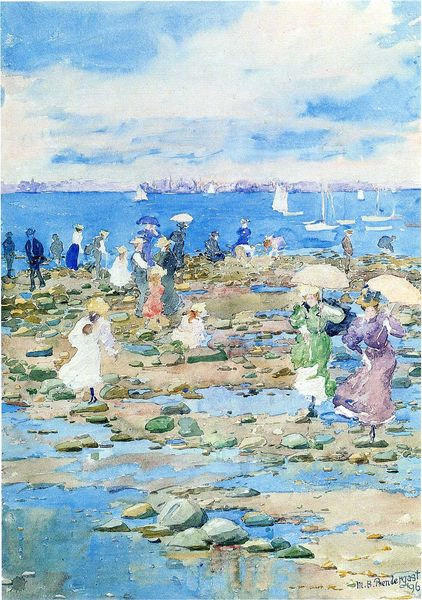
Dimensions: support: 505 x 610 mm frame: 715 x 815 x 65 mm
Copyright: CC-BY-NC-ND 4.0 DEED, Photo: Tate
Editor: This is "Southwold" by Philip Wilson Steer, painted sometime in his lifetime, between 1860 and 1942, and held at the Tate. The choppy brushstrokes create such a breezy, almost dreamlike quality. What stands out to you about the composition? Curator: Note how Steer utilizes a high horizon line, compressing the pictorial space. The figures are not so much portraits as they are arrangements of color and texture, echoing the vibrant sea. Observe the relationship between the foreground and background – how does it affect our perception of depth? Editor: It almost flattens the scene, making the figures part of the landscape. It is a dance of color and form rather than a realistic depiction. I see how he has built up the paint texture so the eye dances around the scene. Curator: Precisely. The materiality of the paint itself becomes a crucial element, drawing attention to the act of painting rather than illusionism. Editor: I hadn't considered the surface so much; I was caught up in the colors. Thanks.
Comments
Join the conversation
Join millions of artists and users on Artera today and experience the ultimate creative platform.
tate 8 months ago
⋮
Steer spent several summers on the East Coast, at Walberswick and Southwold in Suffolk, making pictures of holidaymakers in the sun. He made rough notes on the spot in sketchbooks, and in the studio made designs for a series of paintings. These were most original in their dislocation of the figures, and their shorthand sketchy outlines. The colours have a brilliance that went beyond the Impressionist paintings of Monet that Steer had seen in London. Although they look spontaneous, most of them took several years to complete. Gallery label, September 2004













